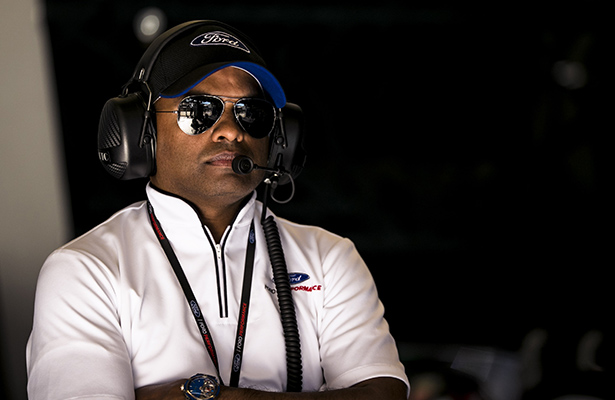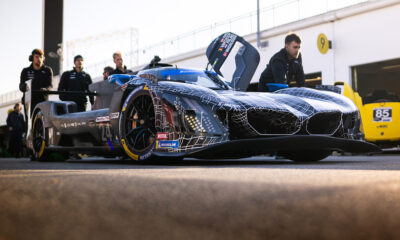
Photo: Drew Gibson/Ford
Ford’s Raj Nair believes common prototype regulations between IMSA and the FIA/ACO that would enable the same car to fight for overall wins is the “obvious opportunity” the sanctioning bodies need to look at, in the wake of uncertain future of LMP1.
Hybrid and non-hybrid-powered LMP1 cars are set to be consolidated into a single class beginning next year, following Porsche’s exit from the top class, with discussions underway for an all-new set of regulations to debut in the 2020/21 FIA World Endurance Championship season.
It’s understood officials from IMSA have been part of those initial talks, which could see a common platform between LMP1 and a new generation of DPi machinery, which is due for 2021.
Nair, the Executive Vice President and President of Ford North America, confirmed interest in a factory prototype effort following the conclusion of its Ford GT program, but only if a global platform materializes.
“I think the global aspect of it is going to be important for a lot of manufacturers, but particularly for Ford,” Nair told Sportscar365.
“We’d really like to see something that’s more common between IMSA and WEC. It’s just the obvious opportunity.
“When we talk about affordability, I think the organizers can’t just look at their series in isolation.
“If you were to look across series, and think about what that’s going to do for participation and budget efficiency and getting more cars on the grid and all of that.
“It’s difficult to do, but it’s kind of an obvious solution we’d like more work on, to get to that common IMSA, WEC, ACO, FIA view.”
The manufacturer’s current program with the Ford GT, which runs in both the WEC and WeatherTech SportsCar Championship, is confirmed through the 2019 seasons, with an extension beyond its four-year commitment reportedly unlikely.
Nair said Ford would consider a prototype program should it provide the same flexibility in the technical regulations that it has enjoyed with the common GTLM/GTE platform.
“Obviously the GTLM and GTE is close and we’ve seen what that’s done,” he said. “It’s allowed us to bring four cars to Le Mans, which was well-received.
“I think there’s a very similar opportunity in prototype, for P1 to have a set of rules that are global, that we can race in both series together, that’s affordable.
“I think that’s one of the bigger aspects on what happened to P1.
“Also technology that’s relevant. There’s a fine line between being on the leading edge but not really production relevant.”
One of the big talking points has been the potential continuation of hybrid technology in LMP1, but in a more cost-effective approach.
Nair said he’d support hybrids in the new set of regulations, but only if it has a direct correlation to technology seen on the road today.
“Hybrid technologies? Sure, but they need to be hybrid technologies that are relevant to what we do on production cars, not a hybrid technology that’s purely dedicated to racing,” Nair said.
“I’m not convinced that it needs a hybrid component but I wouldn’t be totally opposed to it if it’s production relevant. I don’t think the fans are screaming for hybrids.
“Hybrids will be an important part of our future, but so will regular internal combustion engines, not just for racing but for production as well.
“That could go either way, and there’s plenty of technology being developed for the regular internal combustion engine as well that would be fun to apply.”
Ford isn’t the only manufacturer pushing for a common set of prototype regulations, with McLaren’s Zak Brown admitting they’d “seriously consider” mounting a bid for overall victory at the 24 Hours of Le Mans should there be a global platform.
“I think all of the manufacturers would say that represents a lot better return on investment than what we have now,” Nair said.
“We’re always looking, we’re always making assessments, and we’re always open to the conversation so we provide our feedback when it can be positive.
“We’re getting so much leverage with our GT. The leverage that we’ve had, being able to have the same car in IMSA and in WEC, the same livery and the teams look the same, and we get coverage everywhere we go.
“It’s almost the template of what could be if we were to be a little bit more global and together between the two series.”






















